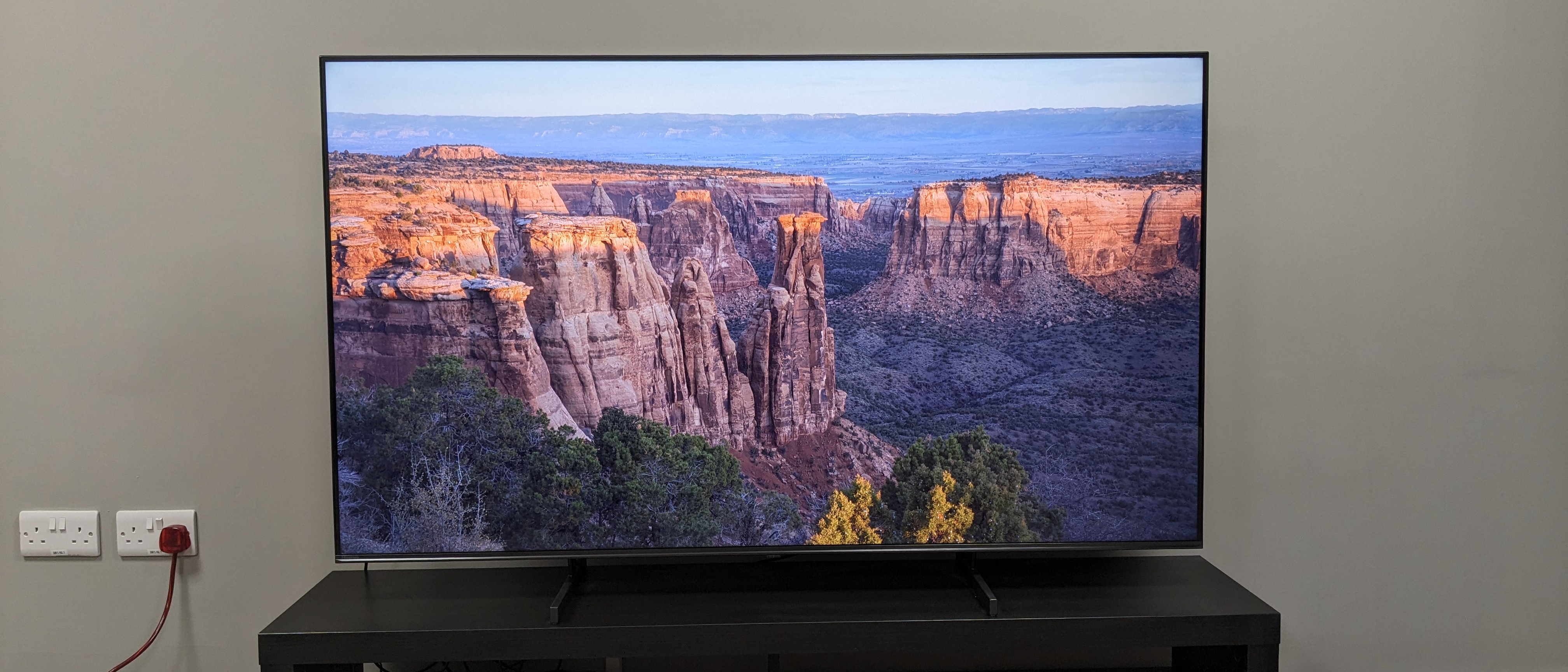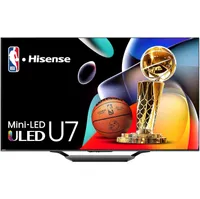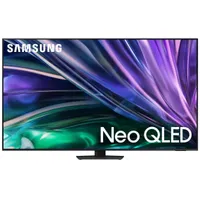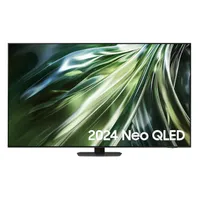TechRadar Verdict
The Hisense U6N is a budget option in a crowded mini-LED TV market. It doesn't best more premium rivals, or even Hisense's own U7N, but its good overall picture quality and a commendable stock of features make it a superior option to other budget TVs.
Pros
- +
Detailed pictures
- +
Punchy colors
- +
Affordable price
Cons
- -
Thin sound quality
- -
No HDMI 2.1 ports for gaming
- -
Limited viewing angles
Why you can trust TechRadar
Hisense U6N review: Two minute review
The Hisense U6N is an affordable mini-LED TV, and though its budget price means there are limitations, there is still plenty to like here thanks to its solid overall picture quality and gaming performance.
Picture quality is generally good across the board for the Hisense U6N, with its detail and vibrant, punchy colors being the strongest highlights. Black levels and contrast are solid, although blacks can sometimes look more of a gray-ish tone. Motion is one area where the U6N struggles, requiring some settings adjustment to accurately display action movies and sports. (Viewers may generally find they need to tweak picture settings to get satisfactory performance from the U6N.)
Sound quality is one of the U6N’s low points. Its limited speaker array delivers clear dialogue and a generally meaty bass, but its soundstage is limited, feeling contained to the screen itself. Some may find the built-in sound fine, but I’d recommend adding one of the best soundbars to this TV.
Although the U6N lacks 4K 120Hz support, a key feature of the best gaming TVs, gaming on the Hisense is still an enjoyable experience overall. Dolby Vision gaming, VRR and ALLM are on offer and there’s a Game Bar menu for those looking to quickly adjust settings.
The U6N uses the VIDAA smart TV platform in the UK and Australia and Google TV in the US. VIDAA is easy enough to navigate, although the home menu can be cluttered with too many recommendations (some unnecessary) and this can affect performance. Menus, however, are well organised and there are a good number of picture settings. US readers can check out our recent TCL QM851G review for an idea of how Google TV works.
Value is a highlight for the U6N – although this is less so in the UK. Mini-LED TVs come at a premium, but with the U6N you can get a 65-inch set for as low as $599, a price that rivals budget options such as the Amazon Fire TV Omni QLED. It’s bested by the Hisense U7N, one of the best TVs of 2024, in terms of value, but the U6N stands out as a cheap option in a crowded and competitive mini-LED TV market.

Hisense U6N review: Prices & release date
- Release date: 2023
- 50-inch Hisense U6N: N/A/ £899 / N/A
- 55-inch Hisense U6N: $599 / £999 / AU$995
- 65-inch Hisense U6N: $799 / £1,299 / AU$1,295
- 75-inch Hisense U6N: $1,199 / £1,699 / AU$1,495
- 85-inch Hisense U6N: $1,799 / N/A / AU$2,995
Serving as the entry-level model in Hisense’s ‘ULED’ range, which uses mini-LED backlight tech, the U6N sits below the Hisense U7N and Hisense U8N. It’s available in a wide range of sizes from 50 to 85 inches, but some model availability depends on region. The smaller 50-inch model is available in the UK only, but the UK misses out on the larger 85-inch model, available in both the US and Australia.
Sign up for breaking news, reviews, opinion, top tech deals, and more.
Already competitively priced in a crowded mini-LED TV market, particularly in the US, the U6N’s price has dropped since its release, with the 65-inch model I tested available for as low as $599. There have even been discount codes in the UK, where prices for Hisense TVs usually take longer to reduce.
Hisense U6N review: Benchmark results
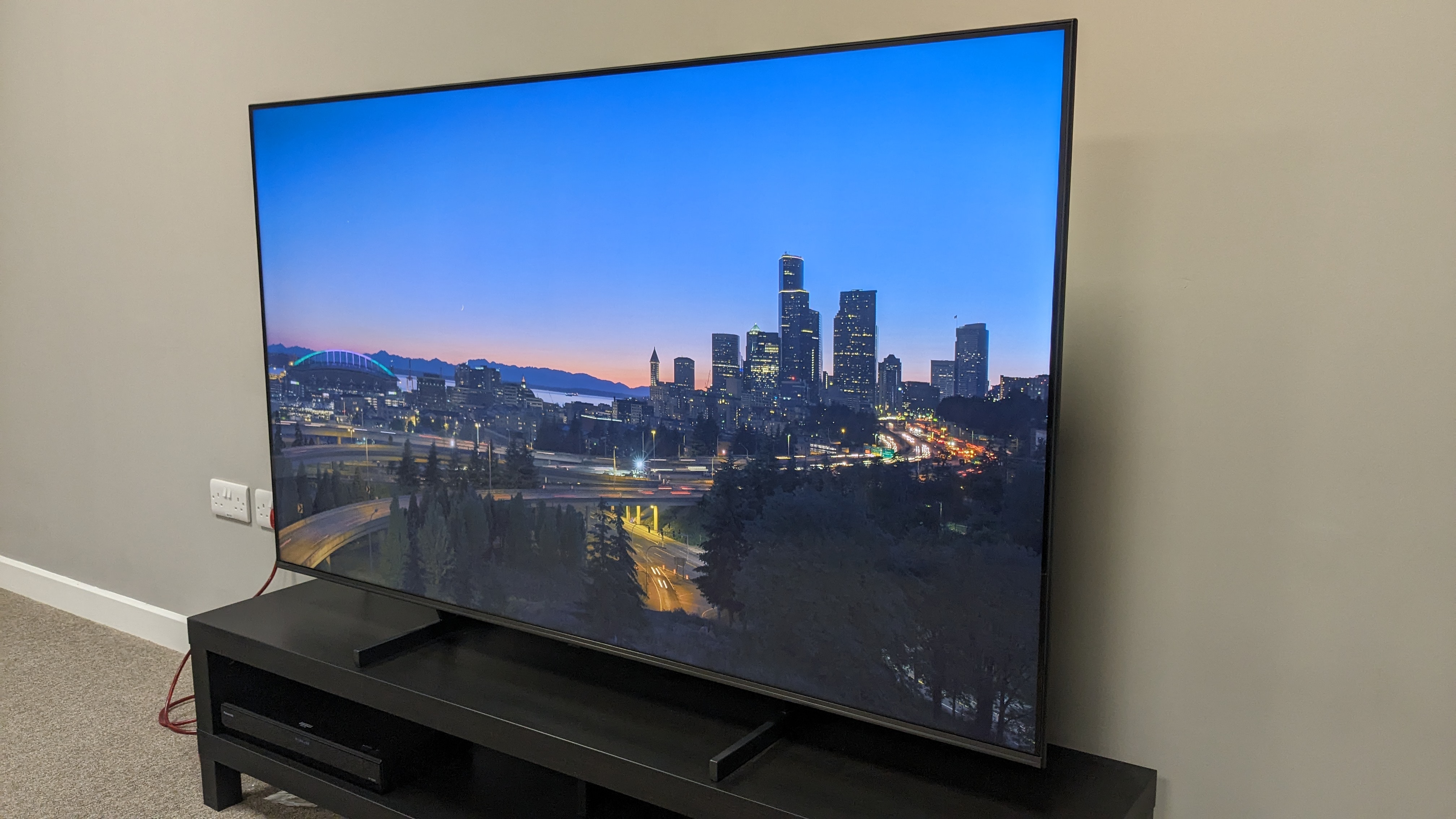
Hisense U6N review: Features
- QLED panel with mini-LED backlight
- Dolby Vision and HDR10+ support
- VIDAA / Google TV Smart TV platform
The U6N uses a QLED panel and a mini-LED backlight with full-array local dimming to provide improved contrast over standard LED TVs. It has complete HDR support, with the ability to display both Dolby Vision and HDR10+ high dynamic range formats.
For gaming, the U6N’s features are limited compared to its more premium U7N and U8N counterparts, with no HDMI 2.1 ports included, though the U6N still features VRR and ALLM support and a Game Bar menu for settings adjustments. Support for 120Hz is available at 1080p resolution (without VRR) but those looking for 4K 120Hz will miss out.
The U6N has a 2 x 10W built-in speaker array with Dolby Atmos and DTS: Virtual X support. There are preset sound modes for different categories – Movie, Standard, Sport and more – plus an Enhanced ACR mode that creates a sound profile based on content.
Hisense’s smart TV platform varies depending on your region – in the US it’s Google TV, and in the UK and Australia it’s Hisense’s own VIDAA platform (the 65-inch U6N I tested used VIDAA). You'll have access to major apps such as Netflix, Disney Plus and Prime Video regardless, but in the UK, VIDAA hosts Freely, a live TV streaming platform that requires no satellite or antenna for live viewing. It’s backed by the BBC, ITV, Channel 4 and Five and plays host to their catch-up services – BBC iPlayer, ITVX and more. In the US, the U6N features an ATSC 1.0 digital TV tuner, a step-down compared to the U7N’s next-gen ATSC 3.0 tuner.
The U6N’s design is pretty basic overall, favoring simplicity. It has solid build quality and uses two support feet as opposed to the pedestal stand used for the U7N. It also has a mixed metal and plastic frame compared to the U7N’s metallic frame. The included remote is a cheaper-feeling, button-heavy design, whereas the U7N has a smaller, rechargeable remote.
- Features score: 4 / 5
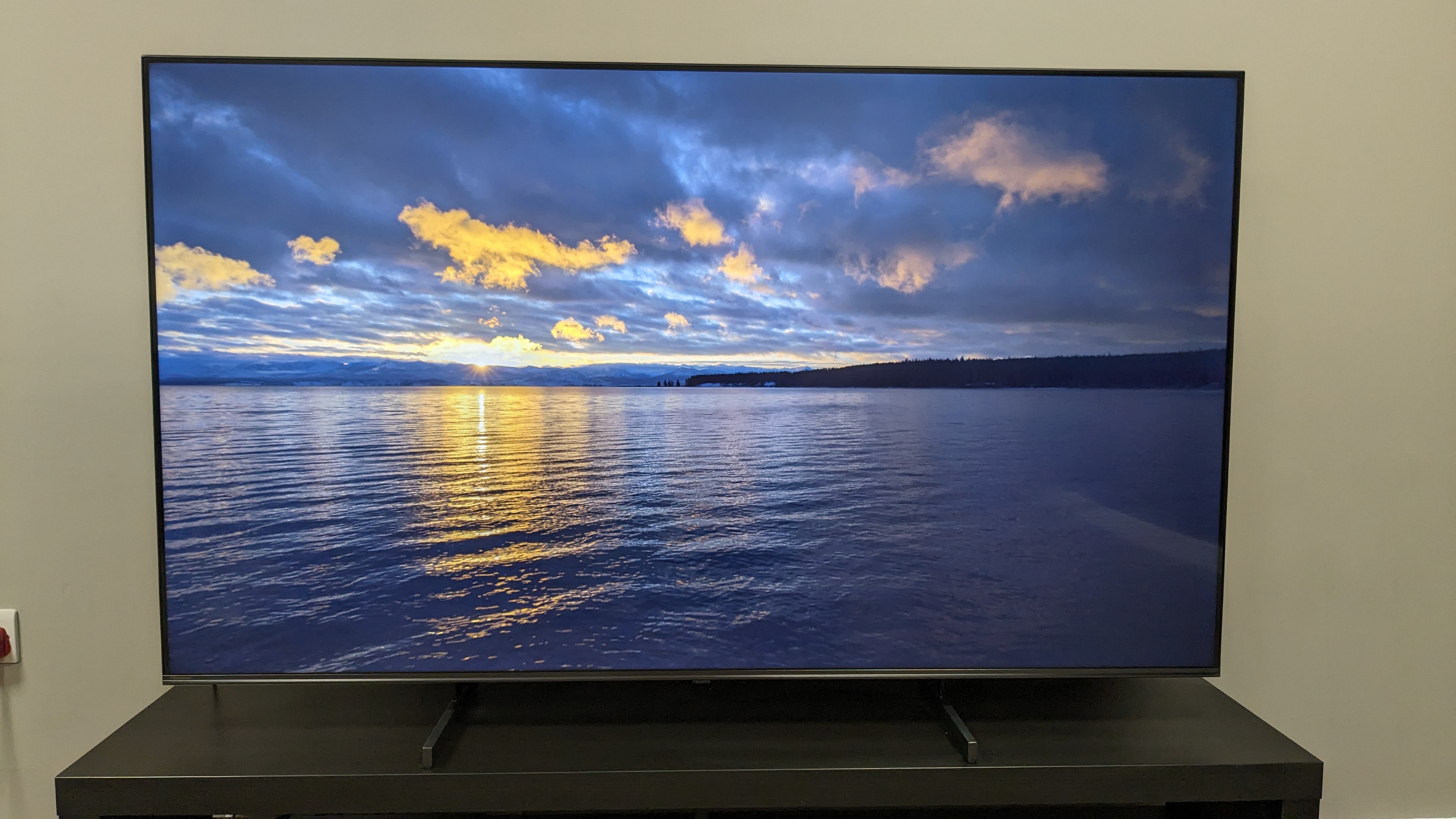
Hisense U6N review: Picture quality
- Refined detail
- HDR sources look great
- Inconsistent motion handling
As the U6N is an entry-level mini-LED model, I didn’t expect high levels of brightness overall but was still surprised by the results it yielded, which were low for a mini-LED TV. Measuring peak HDR brightness on a 10% window, it gave a result of 651 and 612 nits in Filmmaker and Standard picture modes respectively. That puts it around the level of the LG B3, LG’s 2023 entry-level OLED TV. It’s also significantly dimmer than its more premium sibling, the Hisense U7N, which yielded results of 1074 and 809 nits in Filmmaker and Standard picture mode respectively.
Full-screen brightness results were much better. The U6N yielded HDR brightness results of 580 and 572 on a 100% window, making it a good budget choice for daytime viewing. During testing, the U6N did suffer from mirror-like screen reflections from our testing room’s overhead lighting, but very few TVs have successfully nullified these – the Samsung S95D being the best example.
Starting with lower-resolution sources, the U6N’s upscaling struggled to improve the fuzzy textures and dull colors of standard-definition broadcast TV compared with more premium sets. However, it did a good job with HD broadcast TV, maintaining clear textures across its 65-inch screen.
I next moved on to 4K and HDR sources. Starting with the demo footage section of the Spears & Munsil UHD Benchmark 4K Blu-ray, the U6N demonstrated good detail. Textures gave animals and nature shots good depth, and although they didn’t rival that of a premium mini-LED TV such as the Sony X95L, they were better than anticipated. Colors were also bright and punchy, as shown by images of butterflies and exotic birds.
Contrast overall was good l and although some backlight blooming was present, black levels were deep enough for an entry-level mini-LED – even during night sequences with dark skies, and in studio shots with black backgrounds.
Switching to reference movie scenes I use for testing, the U6N performed solidly when displaying The Batman’s gritty, dim tones. Since The Batman is a Dolby Vision disc, there were several Dolby Vision picture modes to choose from, and I switched between Dolby Vision IQ and Dolby Vision Dark.
Black levels weren’t naturally as good as you’d find on the best OLED TVs, but they were decent overall, only taking on a slightly gray hue when in Filmmaker Mode. Contrast was surprisingly good, with the U6N demonstrating a solid balance between light and dark tones in The Batman’s opening crime scene.
Another pleasant surprise was the U6N’s ability to show details in these dark scenes, such as in Batman’s armor and Jim Gordon’s clothing. I found Dolby Vision Dark to have a more accurate picture here, but for those looking for a brightness boost, Dolby Vision IQ will do the job.
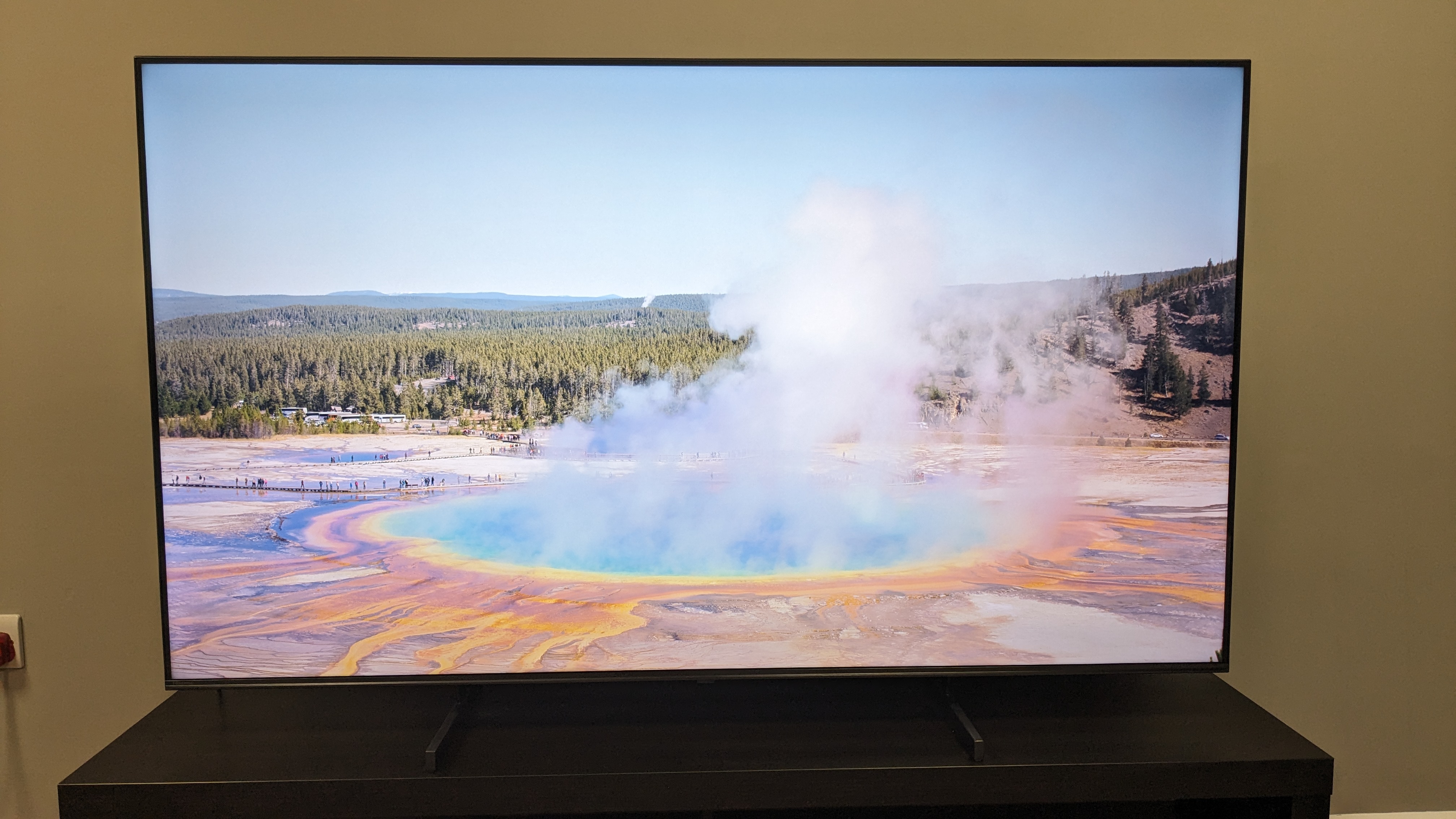
Moving onto Ready Player One, the U6N demonstrated dynamic colors throughout, handling the shimmering blues of the OASIS and Parzival well and giving the fireworks and gold coins during the opening race a glistening punch. Watching a stream of Star Wars: The Last Jedi on Disney Plus, the throne room fight scene showcased the U6N’s control of bright colors, with the vibrant reds within the scene maintaining a natural look while still appearing vivid.
Motion handling is where things get complicated for the U6N. As it's a 60Hz panel, it benefits from motion settings including blur and judder reduction, but I found that these had to be experimented with heavily. I generally found placing both blur and judder at the lower-end to mid-way settings to be best. Watching the Batmobile chase from The Batman, the U6N initially struggled on long, panning shots and swerving vehicles, but the above settings helped with this.
The same motion settings were very much necessary when watching a stream of a soccer game on Prime Video. Of the motion presets, I generally found Smooth to be the best for handling the quick motion of the camera trying to keep up with the ball, while Film or Standard were the best for movies. There is an AI Sports mode to aid with clarity, but while it helped with motion, it oversaturated the greens of the field and bright colors of the uniforms. The Standard picture setting with the above motion clarity settings seemed to suit sports viewing the best.
Like other mini-LED TVs, the U6N is subject to backlight blooming. Viewed off-angle, this became more noticeable, and contrast and black levels also faded when viewed from off-center seats.
While the U6N doesn’t wow in any area, it has a good overall picture for a budget TV.
- Picture quality score: 4/5
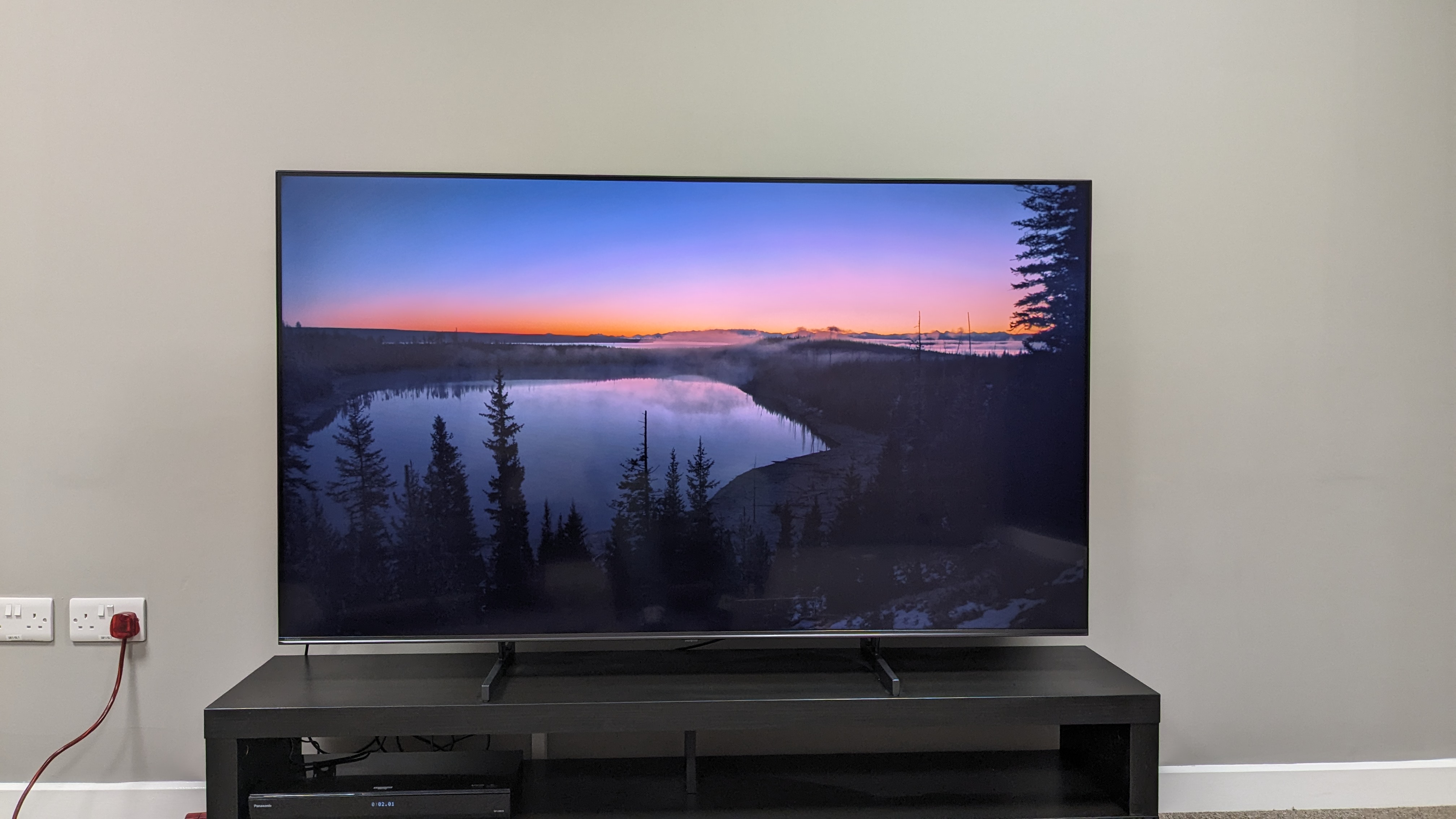
Hisense U6N review: Sound quality
- Good dialogue clarity
- Average directional sound
- Limited soundstage
With a 2 x 10W speaker array, the U6N isn’t going to sit amongst the best TVs for sound. Dolby Atmos and DTS: Virtual X processing is a welcome feature here, but the U6N’s speakers limit the impact of both.
Of available sound presets, I generally found Theater to be the most consistent across all sources and suited movies best. Viewing both the Batmobile chase in The Batman and the opening race in Ready Player One, the U6N demonstrated solid, punchy bass and good dialogue clarity even throughout these intense sequences.
Unfortunately, the U6N’s speakers struggled in other areas. There was a decent sense of directional sound, but Atmos effects like the pounding rain in The Batman were inaudible. The soundstage was also very limited, with sound never extending beyond the confines of the screen. I’d strongly recommend using a soundbar with the U6N.
- Sound quality: 3 / 5
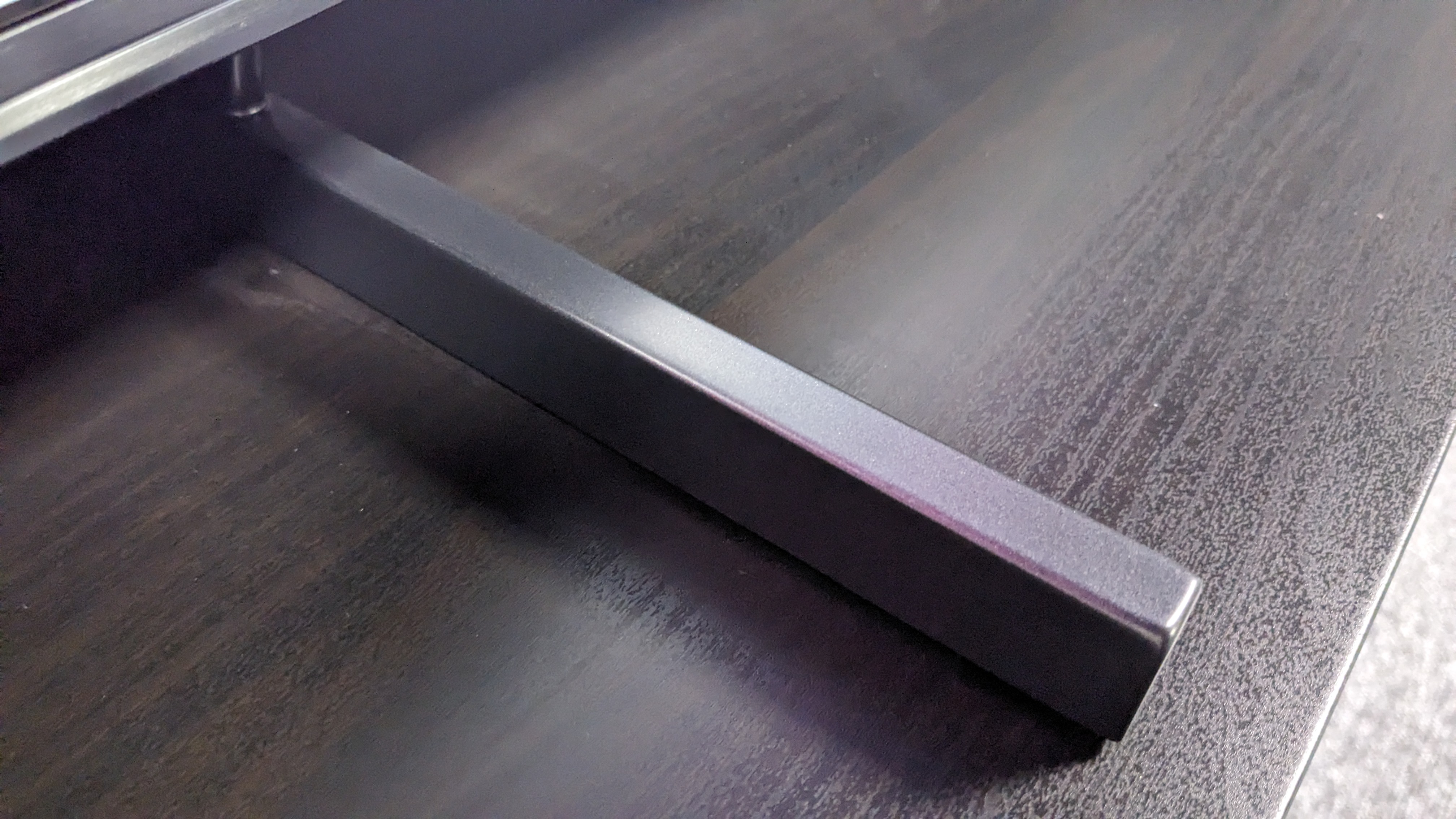
Hisense U6N review: Design
- Solid build quality
- Mix of plastic and metal materials
- Basic, safe design
The U6N’s design is safe – in both good and bad ways. Its build quality is solid enough and the mix of plastic and metal materials on the rear means it feels slightly more premium. However, there is no denying that the plastic elements of the screen are on the cheaper side.
Hisense uses support feet for the U6N as opposed to the pedestal stand found on the step-up U7N. These are sturdy enough when placed on furniture, although once again the feet feel a little on the cheap side.
The U6N has a trim enough bezel and frame, but is undoubtedly thicker than other sets in its price range. I’d have expected a slimmer design given its modest speaker array. Finally, the U6N’s supplied remote is basic and feels on the cheap side compared to the slim, streamlined remote supplied with the U7N.
- Design score: 3.5 / 5
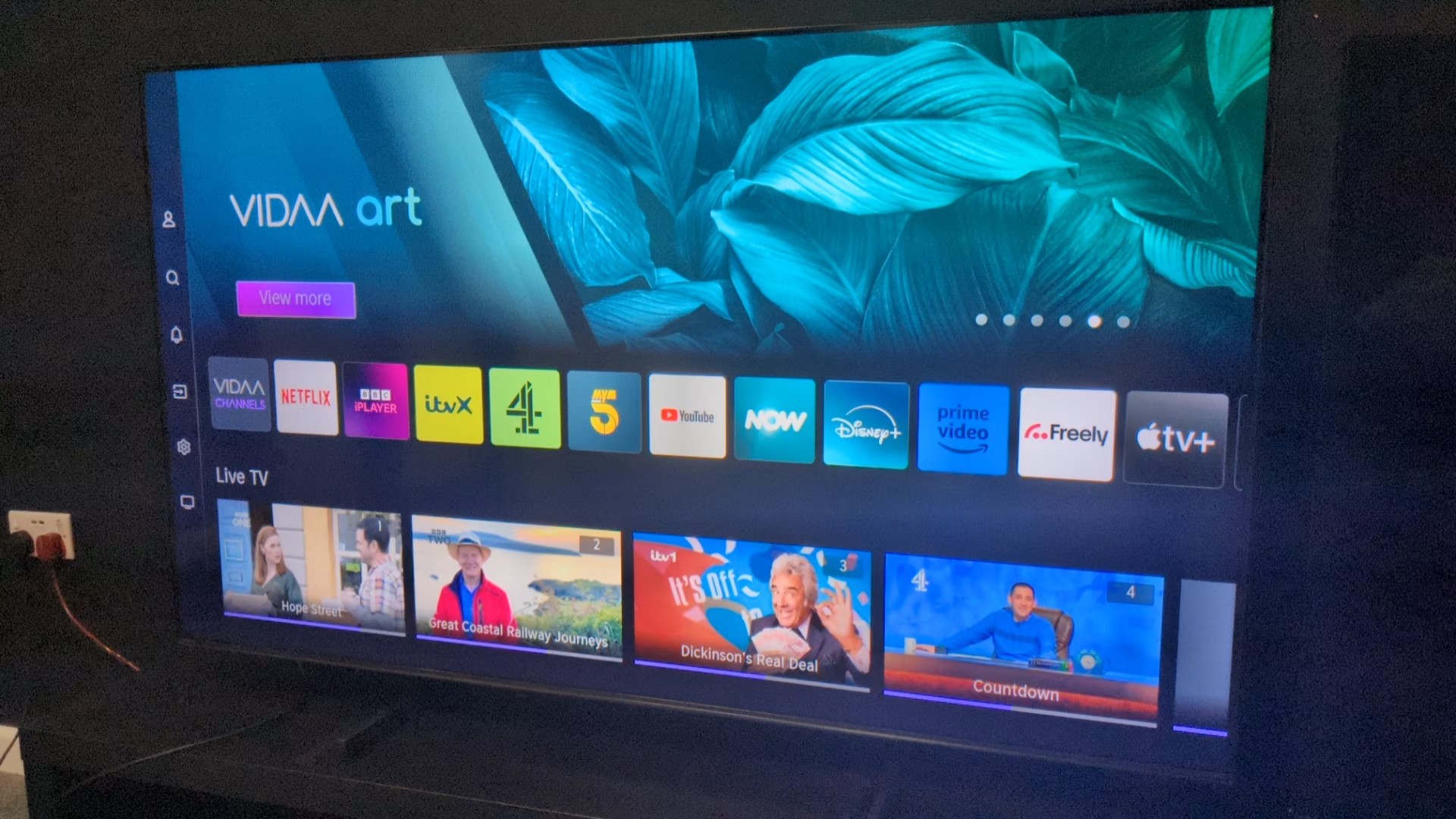
Hisense U6N review: Smart TV & menus
- Google TV (US), VIDAA (UK & Australia)
- Numerous picture settings
- Basic and sometimes cluttered layout
The U6N comes with Google TV in the US and VIDAA in the UK and Australia. As I’m based in the UK, I will be focusing on the VIDAA smart TV platform, but if you're based in the US and want an idea of how Google TV works, check out our recent TCL QM851G review (although some settings and options will differ).
VIDAA has access to all major apps such as Netflix, Prime Video, and Disney Plus, as well as Freely, a relatively new service that enables live TV streaming without the need for a physical antenna or satellite connection for both HD and SD channels. It also hosts the UK-based streaming apps BBC iPlayer, ITVX, Channel 4 and Five and even bases recommendations on viewing history.
The VIDAA home menu looks cluttered, with a large banner ad at the top of the screen and a long list of recommendations underneath that can affect scrolling speed and navigation, giving it a clunky feel. It is packed with settings for tweaking the TV's picture, however, and the menus are well laid out and user-friendly, with settings neatly organized.
- Smart TV & Menus score: 3.5 / 5
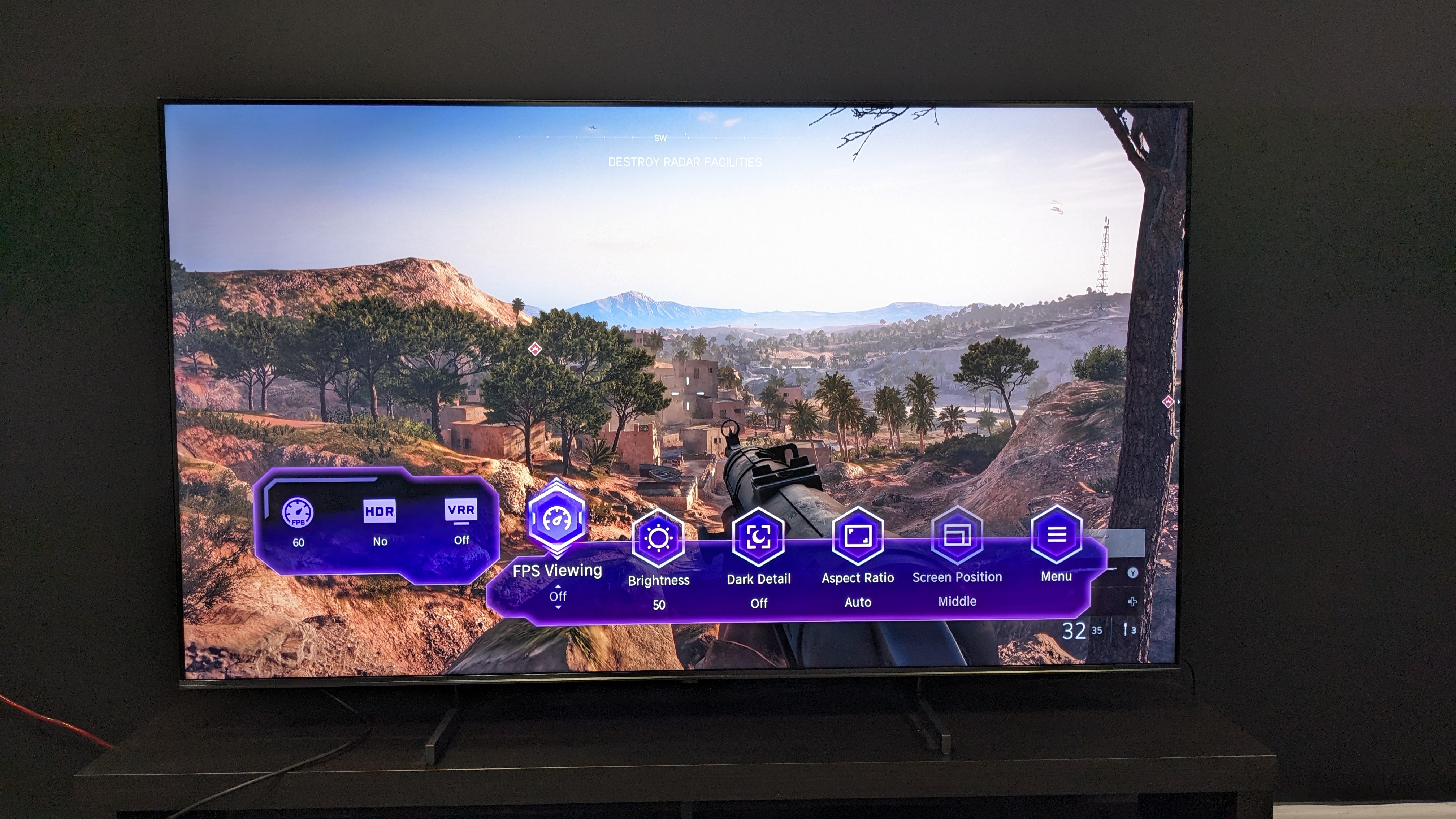
Hisense U6N review: Gaming
- Dolby Vision Gaming, VRR, and ALLM
- No HDMI 2.1 ports
- 13.2ms input lag
The U6N has limited gaming features compared to more premium sets. There are no HDMI 2.1 features (except for eARC) such as 4K 120Hz support, though it does support Dolby Vision gaming, VRR and ALLM. There is an option to play at 120Hz with a lower resolution, although VRR is unavailable with this setting. It also features a Game Bar menu where settings such as Dark Detail and FPS Viewing can be adjusted.
Despite having fewer features, gaming on the U6N is still a fun experience. Playing Battlefield V, intense combat sequences felt smooth. From scanning the environment to sprinting to avoid incoming enemy fire, everything was seamless and felt suitably fast-paced despite being locked at 4K 60Hz.
The U6N also delivered strong picture quality while gaming, with the desert sections in Battlefield looking sufficiently bright. The U6N’s picture in darker sections demonstrated solid black levels overall, but a gray wash sometimes appeared. Textures and details were also refined, although they looked a little softer than on the Hisense U7N and Samsung QN85D.
The U6N’s input lag was average compared to other TVs in this range, yielding a result of 13.2ms. However, this is still below the 15ms threshold that most gamers look for.
- Gaming score: 4/5
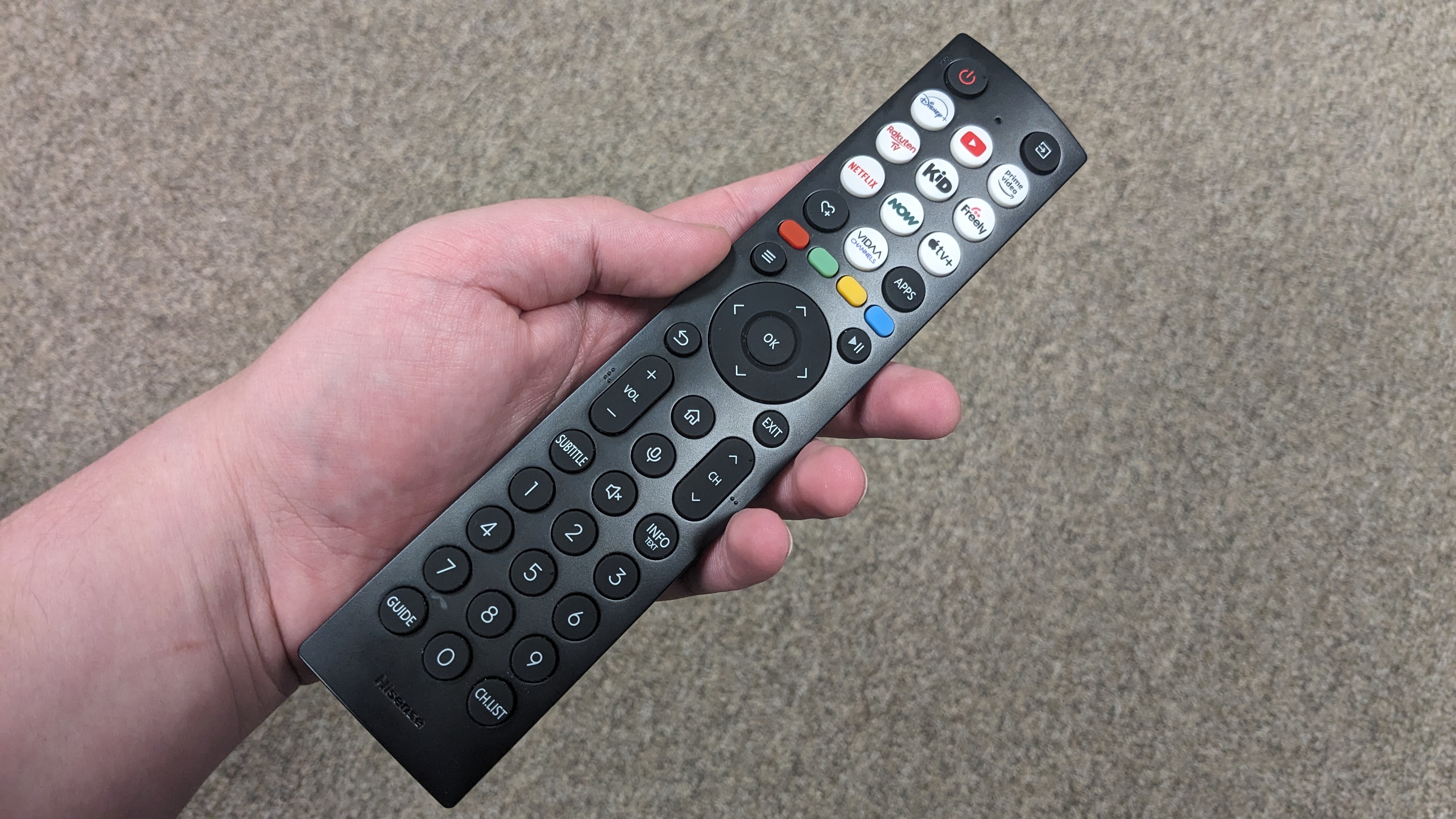
Hisense U6N review: Value
- Brilliant value in the US and Australia
- Competitive mini-LED market
- Significantly cheaper than some rivals
The U6N’s value is affected by region. In the US, the 65-inch model I tested has fallen as low as $599 and the 55-inch model has dropped to a staggeringly low $449. That’s very affordable for a mini-LED TV and even cheaper than some regular LED sets. It may not come with all the gaming features we look for, but you’re unlikely to find those elsewhere at this price.
In the UK, the U6N doesn’t demonstrate the same value. For example, the 65-inch model is priced at £1,299, which puts it only slightly below the Samsung Q80D, a TV that delivers impressive QLED performance and a wider range of gaming features.
It’s worth remembering that the step-up Hisense U7N is also excellent value, offering more local dimming zones, better contrast, and superior gaming features for $200 more in the 65-inch size ($799).
Still, the U6N mini-LED TV delivers good performance at a price you'd usually expect to pay for a standard LED model.
- Value score: 4/5
Should I buy the Hisense U6N?
| Attributes | Notes | Rating |
|---|---|---|
| Features | Good picture quality and gaming features, but lacking some options of a more premium sets such as 120Hz | 4/5 |
| Picture quality | Refined textures and punchy color, but limited viewing angles | 4/5 |
| Sound quality | Thin sounding speakers overall, but dialogue is clear | 3/5 |
| Design | Basic design but with a solid overall build quality | 3.5/5 |
| Smart TV and menus | VIDAA feels a little slow and cluttered compared to other smart TV platforms | 3.5/5 |
| Gaming | A good set of gaming features, but lacks 120Hz refresh rate at 4K | 4/5 |
| Value | Good value in the US and Australia with a cheap price for what's on offer | 4/5 |
Buy it if
You want mini-LED for cheap
Good mini-LED pictures are on offer here for the same as you'd expect to pay for a basic LED TV.
You want a good picture for less
Crisp textures, rich detail and punchy colors are just some of the U6N's picture quality highlights.
You want a good budget gaming TV
VRR and ALLM are on offer here, as well as decent performance and a solid picture, all at a budget price.
Don't buy it if
You're looking for good built-in sound
The U6N's speakers sound thin, with a limited soundstage and lacking bass. A soundbar is recommended for this TV.
You need a complete gaming TV
With no HDMI 2.1 ports for gaming, 4K 120Hz isn't an option here, though you'll find it on the step-up Hisense U7N.
You'll be watching off-center
The U6N's picture falters when viewed from an angle, losing contrast and displaying obvious backlight blooming.
Also consider
| Row 0 - Cell 0 | Hisense U6N | Samsung QN85D | Hisense U7N | Samsung QN90D |
| Price (65-inch) | $799 / £1,299 / AU$1,399 | $1,899 / £2,099 / AU$2,999 | $999 / £1,599 / AU$2,299 | $2,699 / £2,699 / AU$3,999 |
| Screen type | Mini-LED | Mini-LED | Mini-LED | Mini-LED |
| Refresh rate | 60Hz | 144Hz | 144Hz | 144Hz |
| HDR support | Dolby Vision/HDR10+/HDR10/HLG | HDR10+/HDR10/HLG | Dolby Vision/HDR10+/HDR10/HLG | HDR10+/HDR10/HLG |
| Smart TV | Google TV (US/Aus) / VIDAA (UK) | Tizen | Google TV (US/Aus) / VIDAA (UK) | Tizen |
| HDMI ports | 4x HDMI 2.0 | 4x HDMI 2.1 | 4 (2x HDMI 2.1, 2x HDMI 2.0) | 4x HDMI 2.1 |
Hisense U7N
The U7N is the step-up model from the U6N and offers better picture quality, more gaming features and is overall better value for money. If you can stretch your budget that little bit further, it's worth opting for the U7N over the U6N. Check out our Hisense U7N review to see what the step-up gets you.
Samsung QN85D
The Samsung QN85D delivers more than the U6N in every area – picture, sound, design, gaming – but comes at a significantly higher price. Opt for this if you're a Samsung fan and can spend the extra money. Check out our full Samsung QN85D review for more info.
Samsung QN90D
The Samsung QN90D is a more premium option than the U6N, U7N and QN85D and from what we've seen so far is set to have the strongest picture of the group, while also offering a full list of gaming features. But the QN90D's high price tag is hard to justify against more budget options, so this really comes down to how much more you're willing to spend for a better picture.
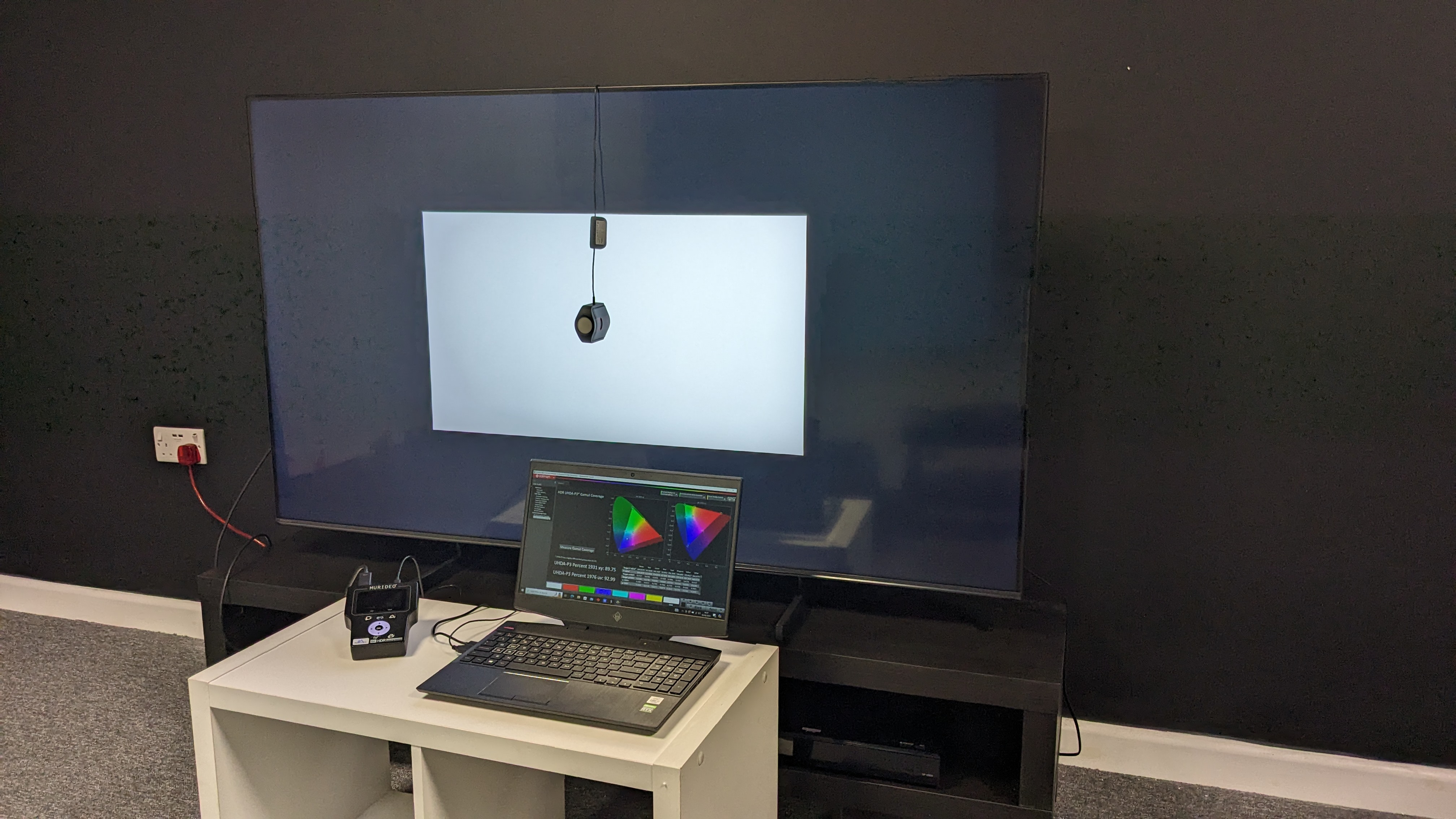
How I tested the Hisense U6N
- Tested using HDR and SDR sources
- Measurements taken using specialized equipment
- Tested in lab with varying lighting conditions
I started the testing process of the U6N with some casual viewing to determine the most accurate picture mode, in this case, Filmmaker, which would be used during both subjective testing and objective testing for measurements.
Starting with subjective testing, I viewed standard-definition broadcast TV and DVDs, and 4K HDR ones, such as Blu-ray and streaming, to test picture quality, judging based on contrast, color, black levels, shadow detail, motion processing and more.
I played reference scenes from 4K Blu-rays (using the Panasonic DP-UB820, the best 4K Blu-ray player available) I am familiar with to determine how accurately the U6N displayed them.
After subjective testing, I moved on to objective testing, taking measurements using specialized equipment – a test pattern generator and colorimeter – and recorded the results using Portrait Displays' Calman calibration software.
I also used an Xbox Series X to test the U6N's gaming performance and a Leo Bodnar 4K HDMI input lag tester to test its input lag.
For a more detailed breakdown, check out our guide on how we test TVs at TechRadar.
- First reviewed: August 2024
- Read TechRadar's review guarantee

James is the TV Hardware Staff Writer at TechRadar. Before joining the team, he worked at a major UK based AV retailer selling TV and audio equipment, where he was either telling customers the difference between OLED and QLED or being wowed by watching a PS5 run on the LG 65G2. When not writing about the latest TV tech, James can be found gaming, reading, watching rugby or coming up with another idea for a novel.
